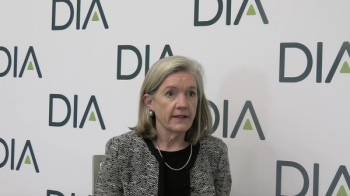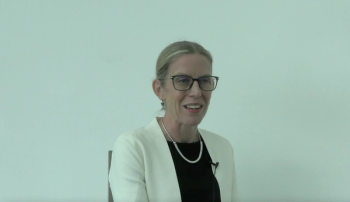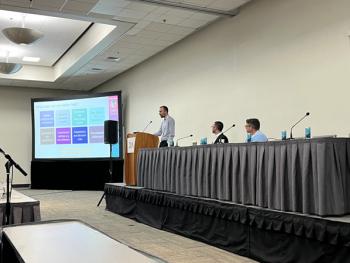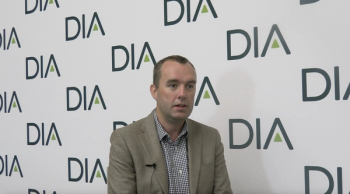
In part 2 of this video interview, Diane Lacroix, vice president, clinical data management, eClinical Solutions highlights how artificial intelligence can help industry keep pace with the increasing complexity of data.

In part 2 of this video interview, Diane Lacroix, vice president, clinical data management, eClinical Solutions highlights how artificial intelligence can help industry keep pace with the increasing complexity of data.

Phase III SURMOUNT-OSA trial data show positive impact of tirzepatide in patients with moderate-to-severe obstructive sleep apnea and obesity.

CAR T cell therapy candidate will be evaluated in Phase I multicenter, open-label clinical trial.

In part 1 of this video interview, Diane Lacroix, vice president, clinical data management, eClinical Solutions discusses the current landscape of data collection in clinical trials and the growing complexity of protocols.

Imfinzi (durvalumab; AstraZeneca) combined with chemotherapy led to a statistically significant and clinically meaningful improvement in event-free survival and overall survival compared with neoadjuvant chemotherapy in patients with muscle-invasive bladder cancer.

Recent study reviewed how often patient-reported outcomes were being used as primary endpoints in randomized studies.

Up to 51.5% of participants met the criteria for disease resolution.

Omnipod 5 Automated Insulin Delivery System shows improvements in blood glucose outcomes and overall quality of life among patients with type 2 diabetes.

In an interview with ACT editor Andy Studna at DIA 2024, Beakes-Read, head, global regulatory policy and intelligence, Johnson & Johnson Innovative Medicine highlights the integration of technological advancements into drug development and benefits patients are seeing from FDA's Accelerated Approval Program.

The activation of each clinical trial involves hundreds of tasks, along with many dependencies and handoffs, some of which may be automated, but many require manual processes.

Tremfya (guselkumab) subcutaneous induction therapy shows positive findings for the treatment of adult patients with moderately to severely active Crohn disease.

In an interview with ACT editor Andy Studna at DIA 2024, Cuff Shimooka, chief operating officer of TransCelerate Biopharma touches on how collaboration will be key to innovation in clinical research moving forward.

As clinical research continues to globalize and grow at pace, there is a risk that global greenhouse gas emissions will escalate unless mitigation strategies are actively included in corporate strategies.

Breakout session discusses the impact of incorporating decentralized elements into oncology clinical trials on data integrity, patient safety, and regulatory approvals.

In an interview with ACT editor Andy Studna at DIA 2024, DiCicco, vice president, portfolio management, TransCelerate Biopharma highlights the use of artificial intelligence in clinical research from the perspectives of different stakeholders.

The CAPItello-290 Phase III trial evaluated Truqap in combination with chemotherapy compared to placebo and chemotherapy for the treatment of locally advanced or metastatic triple-negative breast cancer.

Columvi with gemcitabine and oxaliplatin (GemOx) achieved statistically significant and clinically meaningful outcomes treating relapsed or refractory diffuse large B-cell lymphoma compared to MabThera/Rituxan plus GemOx.

In an interview with ACT editor Andy Studna at DIA 2024, Hughes, co-founder and chief commercial officer of CluePoints touches on collaboration with FDA and using artificial intelligence in clinical research.

The FDA approved HyQvia earlier this year as a maintenance therapy to protect against relapse of neuromuscular disability and impairment in adult patients with chronic inflammatory demyelinating polyneuropathy.

Session highlights the value of simulations such as data analysis and endpoint selection in clinical development.

In an interview with ACT editor Andy Studna at DIA 2024, Dabbs, vice president, global product strategy, IQVIA highlights challenges with tech overload and how stakeholders can choose which solution(s) are best for their studies.

Improved diversity in clinical trials can be achieved by exploring opportunities for research in developing countries that have not historically participated in large-scale, industry-sponsored clinical trials.

Siloed systems can make it difficult to marry data to support timely and informed decision-making and optimize clinical trial operations.

Linvoseltamab was previously granted Priority Review by the FDA for adults with relapsed/refractory multiple myeloma who experienced disease progression following prior administration of at least three therapies.

In fourth and final part of this video interview, Marc Buyse, founder, and Sebastien Coppe, CEO; both of One2Treat emphasize the importance of personalizing oncology studies and giving patients more choices.

Elrexfio is a BCMA-CD3-targeted bispecific antibody that the FDA granted accelerated approval in August 2023 to treat patients with relapsed or refractory multiple myeloma who were previously administered at least four lines of therapy.

Approval for Augtyro was based on results from the Phase I/II TRIDENT-1 trial, which demonstrated significant response rates in both tyrosine kinase inhibitor (TKI) naïve and TKI-pretreated patients.

In part 3 of this video interview, Marc Buyse, founder, and Sebastien Coppe, CEO; both of One2Treat highlight how to simplify the design of oncology studies by using prioritized outcomes.

Summit Partners, an investor in the RBQM software provider since 2020, and Clinimetrics SA, a co-founder, will retain minority stakes.

Phase III NextCOVE trial shows Moderna’s next-generation, investigational SARS-CoV-2 vaccine mRNA-1283 achieved the primary efficacy endpoint of non-inferiorty compared with Spikevax in preventing COVID-19.